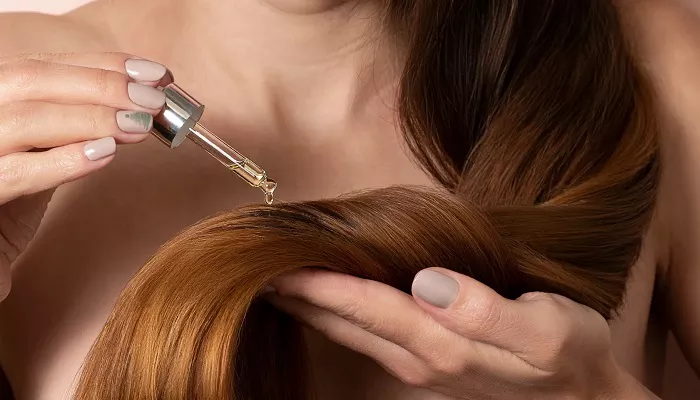Hair oils are widely praised for their ability to reduce frizz, boost shine, and hydrate dry ends—but for many, using them can quickly turn into a greasy disaster. The key to unlocking the full potential of this versatile product lies in applying it correctly, say professional hairstylists.
When used properly, hair oils not only improve the look and feel of hair but may also support growth. “Castor oil, in particular, is rich in fatty acids and can help improve hair density, while jojoba oil promotes balanced hydration and creates a healthy environment for hair growth,” explains Rogerio Cavalcante, hairstylist and owner of The Second Floor Salon in New York City. He also notes that rosemary oil has shown promise in stimulating hair follicles, with some studies suggesting it may be as effective as minoxidil, the only FDA-approved topical treatment for hair loss.
Tailoring Application to Hair Type
According to Christine Bellemare, co-owner of Maven A Collective salon in Boston, how you use hair oil should depend on your hair’s texture and density.
“Hair oil works for all hair types, but the amount and method of application should vary,” she says. Those with fine or thin hair should proceed cautiously—just a drop or two is sufficient, and it should be applied only to the ends. “Avoid the roots to prevent weighing hair down or creating a greasy appearance,” she advises.
In contrast, individuals with thick, coarse, or textured hair can be more generous. “Thicker or curly hair types can handle more product. Applying it throughout the lengths helps smooth and soften texture,” Bellemare says. Hair oils are particularly beneficial for curly and wavy hair, where they help define curls, reduce frizz, and seal in moisture.
Hairstylist and Schwarzkopf Professional Ambassador Brendnetta Ashley recommends choosing the right oil for your hair type. Lightweight oils like grapeseed or jojoba are ideal for fine hair, while denser oils such as castor or coconut oil are better suited for thicker, coily, or curly hair.
Application Techniques
While hair oil can be used on damp or dry hair, Bellemare advises applying it to dry strands for best results. “Oil and water don’t mix, so when applied to wet hair, oil often just sits on the surface,” she explains. On dry hair, oil seals in moisture, smooths frizz, and enhances shine more effectively.
To apply, place the appropriate amount of oil in your palm, rub your hands together, and start at the ends of your hair. Work the product upward toward the midlengths. Use any remaining oil on your fingers to gently distribute it through the rest of your hair. Importantly, Bellemare warns against applying oil before heat styling, as most oils do not offer heat protection and can cause damage when exposed to high temperatures.
Using Hair Oil as a Treatment
Hair oil can also double as a deep conditioning treatment. For an overnight treatment, Cavalcante suggests applying a generous amount to the scalp and ends before bed, then washing it out thoroughly in the morning.
If time is limited, Bellemare recommends leaving the oil on for at least 30 minutes. “Just make sure to shampoo and condition thoroughly to remove excess oil and avoid buildup,” she says.
When to Apply Hair Oil
The best times to use hair oil are either before washing or after styling. “Before washing, apply oil to the midlengths and ends to create a barrier that protects against moisture loss during shampooing—especially important for dry or coarse hair,” Bellemare says. “Post-blowout, it helps lock in hydration, tame frizz, and add shine.”
Addressing Persistent Frizz
If frizz persists despite oiling, there may be underlying issues. “Frizz can be caused by dryness, damage, or environmental conditions like humidity,” Bellemare explains. “Oil acts as a sealant, not a hydrator. If your hair remains frizzy, it may need more intensive hydration through shampoos, conditioners, or leave-in treatments.”
Finally, while hair oils can enhance smoothness and shine, they won’t alter your natural hair texture. “Some hair types are inherently more prone to frizz,” Bellemare says. “Hair oil won’t change your hair’s structure, but it can help you manage it more effectively.”
Bottom line: The right hair oil—and the right technique—can be a game-changer. By understanding your hair’s unique needs, you can harness the full benefits of this powerhouse product without the unwanted greasy side effects.
Related topics:
- How to Straighten Curly Hair Effectively?
- Can You Wash Your Hair Every Day After Dyeing It?
- Scalp Massages and Serums: A Summer Hair Growth Transformation


